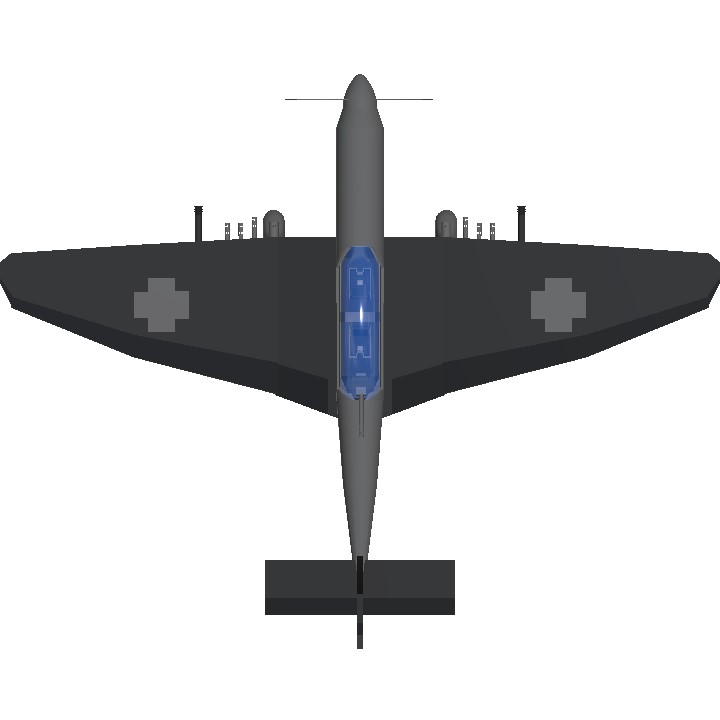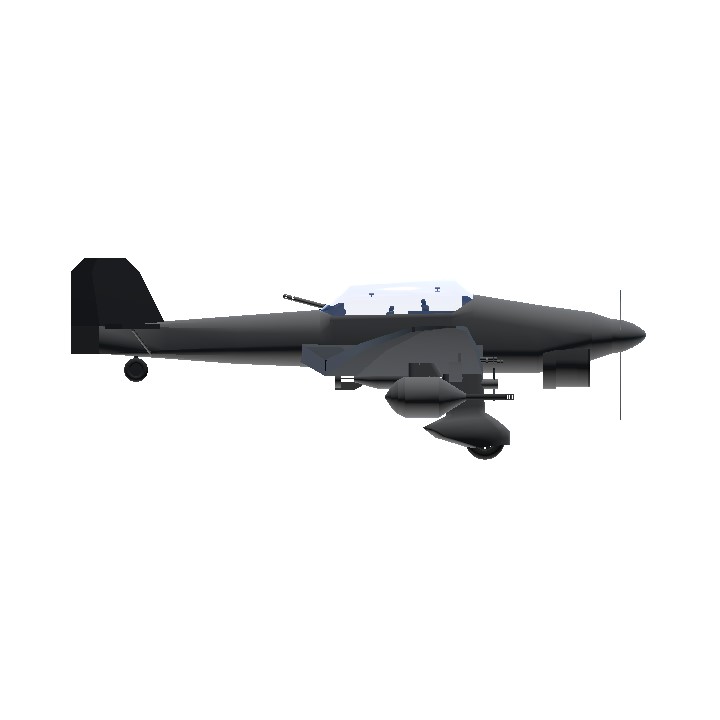The Junkers Ju 87 or Stuka ( German: Sturzkampfflugzeug , " dive bomber ") was a German two-seat bomber and ground-attack aircraft (pilot and gunner/radio operator) of World War II . Designed by Hermann Pohlmann , the Stuka first flew in 1935 and saw combat debut in 1936 during the Spanish Civil War as part of the Condor Legion sent by the German Luftw. TypeDive Bomber. ManufacturerNazi Germany flag Junkers Aircraft and Engine Works AGThe aircraft was easily recognisable by its inverted gull wings , fixed , faired landing gear , and the bellowing siren Jericho -Trompete (" Jericho trumpet "), becoming a propaganda symbol of German air power and the Blitzkrieg victories of 1939–42. The Ju 87 design included several innovative features, such as the automatic hoisting of the wing dive brakes to ensure that the aircraft would recover from a dive even if the pilot passed out due to high acceleration. Although tough, accurate and highly effective in its attacks, the Ju 87 was vulnerable to then-modern fighter aircraft , as were many other dive bombers of the war. Its flaws became apparent during the Battle of Britain ; its poor manoeuvrability, low speed and little defensive armament meant that the Stuka needed a strong fighter escort to operate efficiently.German pilot Colonel Hans-Ulrich Rudel was the most prominent Stuka ace and was the most highly decorated German serviceman of World War II .German pilot Colonel Hans-Ulrich Rudel was the most prominent Stuka ace and was the most highly decorated German serviceman of World War II .
Specifications
General Characteristics
- Predecessor World War II Challenge (Closed)
- Created On Android
- Wingspan 43.3ft (13.2m)
- Length 34.5ft (10.5m)
- Height 12.0ft (3.7m)
- Empty Weight N/A
- Loaded Weight 11,869lbs (5,383kg)
Performance
- Horse Power/Weight Ratio 0.337
- Wing Loading 32.3lbs/ft2 (157.7kg/m2)
- Wing Area 367.4ft2 (34.1m2)
- Drag Points 2714
Parts
- Number of Parts 111
- Control Surfaces 12
- Performance Cost 586






